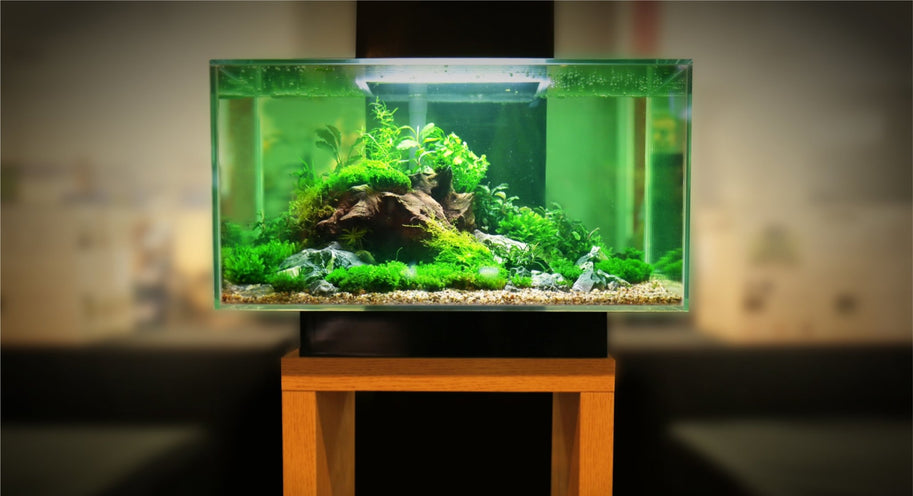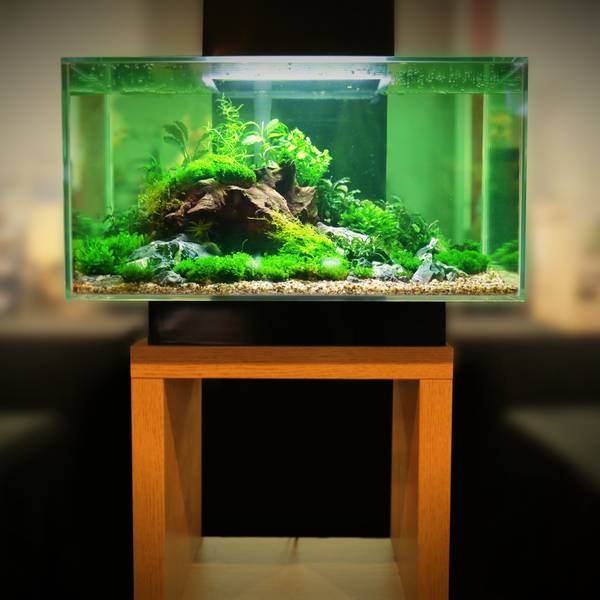It’s silent. It’s violent. It’s ammonia.
There is an invisible, silent assassin fluidly lurking in your tank. One that is known to cause mass extinction in your carefully crafted fish home if left unchecked. It’s a chemical that you may have heard about in chemistry class but didn’t care much about at the time. But now you might.
It’s ammonia, and if left to its forces it can be lethal for your fish.
What is ammonia?
Ammonia, chemically called NH₃, is a type of gas that infuses water from the breakdown of organic waste (e.g. urine, food, dead matter). Because it is a neurotoxin, it damages the nerve tissues, gills, and brain.
Ammonia is also known as the most common cause of fish death, especially in a newly established tank. For this reason, it’s also called new tank syndrome or the breaking in cycle because the aquarium hasn’t had sufficient time to produce special bacteria called ‘nitrifying bacteria’ to process the ammonia.
Causes and Symptoms
An increase in ammonia levels has several different causes, and most of them are preventable. Some common causes are:
- Overfeeding
- Overcrowding
- Changing old gravel to new gravel
- Weak filtration system
- Adding fish too soon to a new tank
- Too thorough of a cleaning
- Decaying, dead fish
- Fish breathing and defecation
Fish death by ammonia toxicity seems to come without warning, but there are some ways to tell if something is amiss. If the aquarium water is frequently cloudy, or if the water smells funky it’s likely that there has been an ammonia spike.
Check your fish’s behaviour. Aquarium Industries suggests that if they seem overly lethargic, are motionless at the bottom of the tank (especially if they are top dwellers), have loss of appetite, and are gasping for air at the surface your fish most likely have ammonia poisoning. Also check their gills, eyes, and fins. A tell-tale sign is inflammation and if the gills are red and appear to be bleeding.
Treatment & Prevention
If any of these symptoms occur in your fish tank, specific steps should be taken immediately to manage the ammonia and to attempt to save the fish.
- Do at least ¼ to ½ tank water changes over the next few days, and this should help to lower the ammonia level by a quarter to a half.
- Increasing the aeration in your tank by using a stronger trickle or waterfall filter and/or using an airstone or bubbler. Ask your Just For Pets member store to see what kind of aeration would be best suited for your tank so that the aquarium doesn’t become over-oxygenated.
- Reduce the amount of food to minimise the amount of waste produced by the fish and laying at the bottom of the tank.
- Aquarium Industries advises lowering the pH below 7.0 since this will lessen the toxicity.
- Use products specifically designed to lower or remove ammonia in the water, such as Seachem AmGuard or API AmmoLock.
There are plenty of ways to help prevent an ammonia spike in your tank. If it’s a brand-new tank, allow several days for the water conditions to settle and filter before adding the fish, but keeping in mind that the nitrogen cycle doesn’t fully begin until fish are added. For this reason, add a couple of starter fish to kickstart the process and help with the establishment of beneficial, nitrifying bacteria.
After a few weeks settling and performing regular water testing to make sure all is well, add a couple more fish. Seachem Ammonia Alert, which is a colour device that continuously detects and monitors ammonia levels, is a great device to add to your aquarium.
Knowing that you have all of these tools to help protect against ammonia, the silent assassin, your fish will be blissfully content swimming around their home.
For more information, contact your local Just For Pets store.






